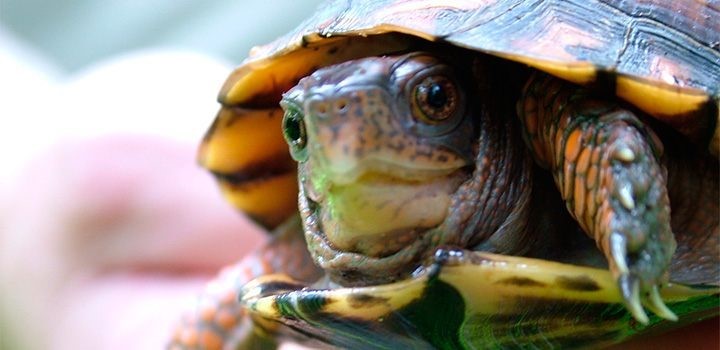Turtles are one of the most popular reptiles as pets, their peculiar armored appearance and charisma has endowed them with a high appreciation by humans.
However, living with these animals has its challenges, especially when it comes to understanding their unique language.
The most difficult challenge for anyone who has a tortoise is to interpret what it wants to say with its movements and sounds, because unlike dogs and even cats, human-tortoise coexistence has not been as close as some would like.
To better understand your pet reptile and ensure its well-being, it is important to know these 5 behaviors of a tortoise and what they mean.
1. Hiding in your shell
Among the most striking actions of turtles is their ability to hide inside their shells, isolating themselves from the outside world.
This action responds mainly to defensive and protective measures, since, as can be seen, the carapace is a shell designed to protect the turtle from predators and external threats.
If the tortoise feels threatened or becomes frightened, it will instinctively guard itself in its fortress until it feels the danger has passed.
In addition to this reason, they also do so in order not to be disturbed, especially when they want to sleep.
2. Urinating when caught
Some turtle owners have expressed their concern about this reaction on the part of their little companions, because many times when they try to pick them up or pick them up, they urinate instantly.
According to specialists, the most common reason is fear, which is a defensive response on the part of the reptile.
It is especially common in those specimens that are not used to being handled and have not yet adapted to their new home.
It is important to be sure to hydrate the tortoise when this happens, either with a bath or with liquid-rich foods such as tomatoes.
3. Walking against the terrarium walls
Walking against the walls of the territory, in the case of terrestrial turtles, and swimming against the aquarium walls, in the case of aquatic turtles, is another of the most striking turtle behaviors for people.
The sight of the tortoise stubbornly going against the walls of its enclosure is normal for newly arrived tortoises, as they are trying to exploit the boundaries of their new home; this behavior usually disappears once the animal has become accustomed to the place.
But if after a few days this behavior does not disappear and the tortoise desperately tries to climb every day, it means that it does not feel comfortable with the enclosure.
This may be due to inadequate size, lack of environment, low or very high humidity or heat, among other reasons that vary according to the needs of the turtle.
4. Dig
Although it may be somewhat curious, one of the favorite activities of many turtle species is digging.
They may do this both to forage for food and to create a shelter against bad weather, especially in winter.
It is not uncommon to see some turtles digging in their terrarium or aquarium, even if they have no soil or sand underneath, which may be another reason why they are scratching the ground in a desperate attempt to make a hole.
In females, when the mating season arrives, it means that they are ready to reproduce or that they are looking to bury their eggs.
In aquatic turtles, it is an indication that the turtle is hungry, as it is searching for food under the sand.
5. Whistling or squeaking
Turtles make sounds, although not many people have managed to hear them. These can be for various reasons, from reproductive to serious health problems.
When a turtle squeaks or whistles when breathing, accompanied with difficulty breathing normally and nasal discharge, it means that it has a respiratory infection and should be treated immediately.
In other cases, high-pitched squeaks and whistles are directly linked to reproduction, although they can also occur in case the tortoise is in a high level of exaltation due to a scare.
Image courtesy of (tortugas.mascotahogar.com), all rights reserved.








